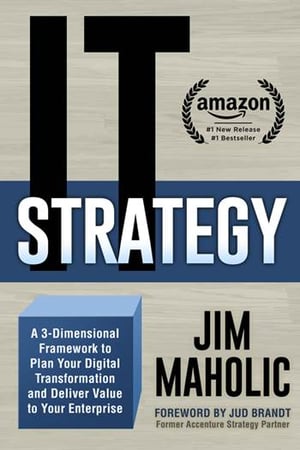Digital transformation frequently involves replacing legacy software with new solutions, whether on-premise, hosted or SaaS solutions. When choosing new software or solutions, and especially when considering a new ERP, customer relationship management (CRM) or human capital management (HCM) system, a thoughtful and deliberate method must be employed to arrive at the optimal decision and ensure your success.
But where to begin such a monumental task? Here are what I believe are eight key steps that will help you along your software selection journey.
1. Understand your current business processes
Before you can lay out a path to get you to your desired future state, you must understand your starting point. Create a document and diagram the existing current state business processes, their associated technologies, and how the various business functions interact today. Yes, it’s tedious, but this step is important because you need to know the extent to which the proposed new solution does not work the way your current business functions work. Without a clear document detailing how things work today, you will have a difficult time pinpointing where any proposed new solution falls short.
2. Document your requirements
In addition to understanding your current state, you need to plan your desired future state. It’s acceptable for the future state to be a little fuzzy initially. One word of caution: requirements lists can devolve into unrealistic wish-lists that bear little resemblance to what is available, affordable or viable. Take your current state process document and discuss improvements in individual processes that would be beneficial. Match that list against reasonable offerings from vendors to build your requirements list. The challenge is finding the right balance between practicality and fantasy.
Picking a new solution is like designing your dream house. Everything can be done. You can have every high-end feature and top-of-the-line fixture you can imagine, assuming you have unlimited time and money. Your job is to help your user community prioritize and set realistic expectations. Not everything your users want is feasible, and not every feature and capability your users want is within budget. Be careful and place reasonable boundaries on your users’ requirements lists. If you encourage users to dream without boundaries, you’ll set yourself up for failure. Your users may ultimately feel betrayed because they thought they were encouraged to build their wish-list in good faith, and yet those wishes got rejected later.
3. Understand the compromises
No single system will meet every need for every user. The only system that could possibly do so is a system you would design, develop and deploy yourself, from scratch. And few businesses have the time, patience or funding for that. So, no single system will meet every need, everyone must realize that compromises will be made.
This is another area where understanding your current state is critical. By understanding the current state, you can create comparison charts that show your current processes and where each proposed solution hits or misses those requirements. Such charts will be useful discussion documents to share with users and executives during the evaluation phase.
4. Encourage adoption, discourage modification
The more your organization can work within the standard, unmodified solution the better your long-term success will be with that solution. Every top tier solution contains hundreds of variables that can be configured to cause the software to behave closely to most existing business processes.
Issues arise when a company seeks to go beyond built-in options and customize the solution, either within the code itself or via callouts to bespoke APIs. Customization creates a level of complexity that typically worsens over time. When the vendor releases an update, your IT staff or consultants will have to retrofit your customizations into the newly updated solution, and do lots of testing. Each occurrence of retrofitting introduces the potential for interface and logic errors.
Users may express dissatisfaction that the new system doesn’t behave like the old system. Even worse, they could conspire to coerce management to approve numerous modifications to enable the wonderful new system to perform like the system the company replaced.
Stand strong and mandate that users adapt to the new solution as the solution supplier designed it. While each interface or API may seem insignificant by itself, these add up to create a “death by a thousand papercuts” scenario.
5. Secure executive sponsorship
Executive sponsorship and support are critical. You need executive sponsorship to inspire and motivate the organization to take the selection process seriously and be realistic. Any new system will be different than your current system. To keep the users from wandering into multiple, disconnected directions, you need a strong executive presence to remind the selection participants that they need to find ways to work with the solution that is presented.
6. Establish an effective IT governance function
An effective and empowered IT governance function is a vital component of a successful IT organization, especially one that is embarking on a major transformation. No commercially-available solution will completely match your existing processes. With each function that is askew, users will voice their displeasure and lobby to have the solution modified to fit unique process requirements. Because each deviation will introduce additional cost, complexity and effort to your implementation, a team or committee must hold the line and decide which deviations are cost-effective and prudent. It is the role of IT governance to evaluate each request and determine the appropriate action. Since organizations have neither unlimited funds nor unlimited time to complete projects, IT governance helps the organization stay laser-focused on its priorities by keeping distractions and deviations to a minimum.
7. Evaluate solution options against team skills
Certain technologies, while excellent and forward-thinking, may not be compatible with the skills your current staff members possess. This shortcoming applies to infrastructure support as well as solution development and maintenance support. Ensure that your staff can support the new system and develop upon it. If there are skills gaps, factor the cost of training, consulting or additional hiring into your financial projections.
8. Exploit software vendors’ quarter close dates
Software sales teams eagerly offer favorable pricing in the third month of a financial quarter. The discounting gets even more aggressive in the final two months of the financial year. If your budget process is flexible, and you can align your contract signing to the end of the software company’s fiscal quarter or fiscal year, you will have excellent negotiating leverage to get good prices.
The best pricing deals usually have expiration dates. To get aggressive pricing, sales teams usually have to make a strong case to their management to receive approval for aggressive discounting. If you let your contract-signing slip past the end of the fiscal year, the quoted price may be null and void. At the end of the fiscal year, sales teams are shuffled; sales management gets rearranged, and the new team may not have the political capital to obtain approval for a previous representative’s offered pricing. For this reason, do your homework and know the quarter and year-end closing dates of your vendors.
If you are interested to learn more, I cover this topic more deeply in my new book, IT Strategy, which presents a comprehensive framework to step readers through the challenges of getting from a blank whiteboard to a fully-baked IT strategy. I welcome your comments, questions and feedback!


Written by Jim Maholic
Jim Maholic has over 25 years of experience as an IT strategist. His career has included two stints as a CIO, executive positions with Big Four and regional consulting firms, and leadership roles with enterprise software companies. He is an award-winning, bestselling author, having written IT Strategy and Business Cases that Mean Business.




